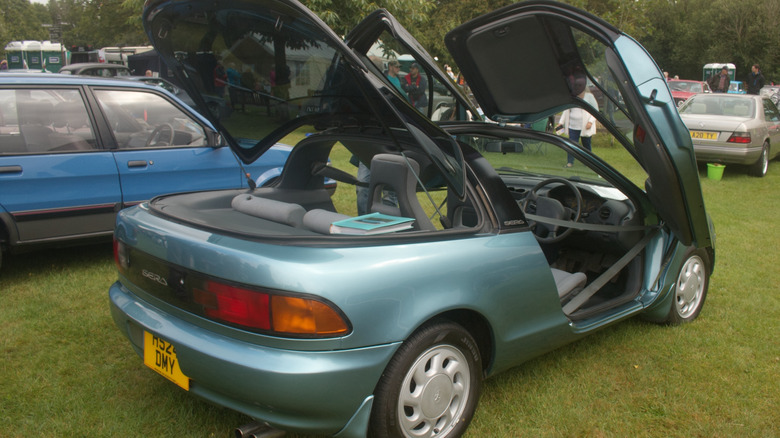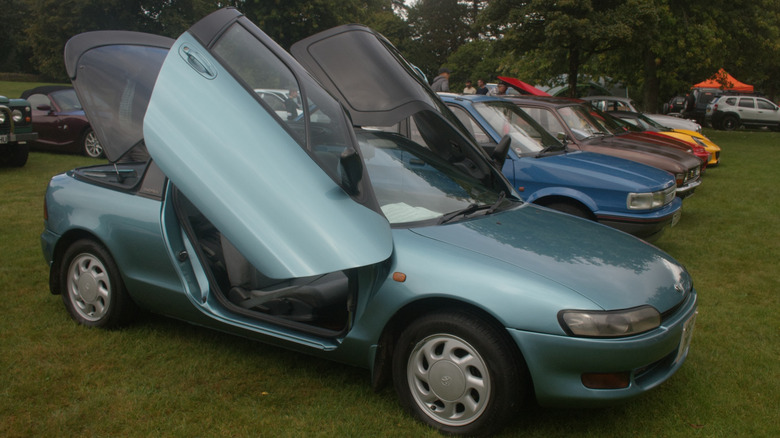Why America Banned The Toyota Sera
The tale of the Toyota Sera is a perfect storm of oddities about the American car marketplace. It was the quintessential "should have worked" vehicle from the 1990s (via MotorBiscuit). Toyota's implementation of the city car paradigm in the U.S. was two decades ahead of the game and had the potential to break open a market that has since proven active and lucrative. So what went wrong with the Sera?
The answer to that question comes down to cultural norms and conflicting expectations on either side of the Pacific. Toyota's unassuming little Sera, which on paper should have delivered everything American urban motorists prize, instead came under intense scrutiny and ultimately solicited a ban from the National Highway Traffic Safety Administration.
Legal or not, however, cars like the Sera predicted the future of American motoring. A few decades after the Sera was banned, Toyota's Camry and Corolla both ranked among the top ten best selling cars in the United States (via Car and Driver). As for how the marketplace shifted from the former state to the latter, read on.
Right design, wrong time
The Toyota Sera was fundamentally a Kei car specced for the global market and given a respectable performance pedigree. Kei cars, short for "keijidosha," or "light automobile," (per Motor Trend) were popular in the 80s throughout Japan and elsewhere. Kei cars were Japanese-manufactured predecessors to the modern city runabouts made by the likes of Hyundai and Kia. They boasted a small footprint, impressive gas mileage, high reliability, and efficient performance.
Toyota built the Sera for wide adoption in 1990, Frankensteining it from parts of three popular Toyotas of the time: The Paseo, Starlet, and Tercel (via MotorBiscuit). The result was a sedate commuter with an exhibitionist side, rocking a glass canopy and butterfly doors alongside top-flight gas mileage and Toyota efficiency.
The rationale for pitching the Sera to American markets was obvious. America has large cities. American motorists enjoy money. Why not sell them a car suited to the motoring challenges of the former, priced to let them save as much as possible?
The short answer is that, even in cities, American driving comes with unique demands, and traffic laws are made accordingly. As MotorBiscuit reports, some of the defining flourishes of the Sera, notably butterfly doors and a T-top roof, clashed with U.S. crash standards. MotorBiscuit noted a source at Toyota, stating that building an NHTSA-compatible Sera "would have amounted to starting over." Toyota wasn't willing, and the Sera sank quietly after a short production run.
Since then, as Kei cars, their Korean successors, and runabouts like the Smart Car have had their day in the sun, the Sera has become a might-have-been for American motorheads to ponder. Had Toyota toughened up the Sera and cranked up its marketing, the American market for light, practical city cars might have opened two decades early.

